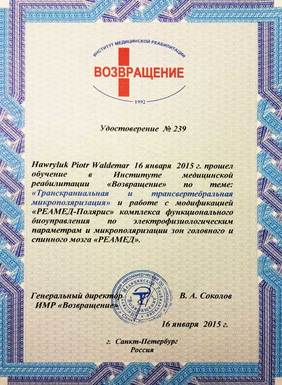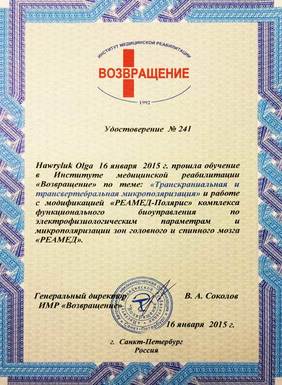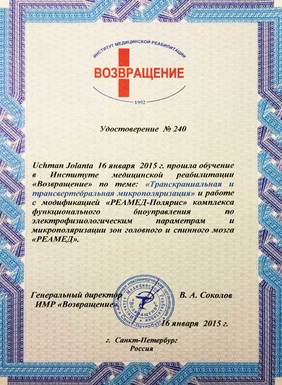What is micropolarization?
Micropolarization of the brain or transcranial direct current stimulation (TDCS) is a promising technique for non-invasive, safe and painless brain stimulation, which is used in neurorehabilitation of patients with brain damage and various neurological dysfunctions.
The consequences of brain damage are not only a result of the damage itself. They are also the effect of the dynamic functional changes taking place in the damaged neural networks and simultaneously are a consequence of the behavioral intercerebral balance disorder.
How does it work?
Direct electrical current (DC) with intensity 0,08-2mA and consistent direction causes neuromodulation of the cortical centers that can be preserved by cyclic repetitiveness of inductions. Micropolrization therefore produces a controlled change in cortical excitability.
The nature of neuromodulation is dependent on the type of electrode - the cathode (c-tDCS) decreases and the anode (a-tDCS) increases the level of cortical excitation. Unilateral brain damage, eg. With injury or stroke leads to an interhemispheric imbalance - damaged hemisphere has low activity, not only due to the destruction of nerve tissue but also as a result of inhibition caused by the competitive, hyperactivity of the structurally intact hemisphere. Therefore in order to restore the balance of stimulation the anode is used on the damaged hemisphere and cathode on the healthy hemisphere. Transcranial electrostimulation acts modulating on synapticand extrasynaptic processes in terms of physiological borders and strengthens the spontaneous processes of normalization.
Transcranial stimulation can be applied to motor, somatosensory, visual and prefrontal cortex affecting cognitive, perceptive and motor functions, enabling and accelerating effectively rehabilitation of patients with neurological disorders. Neuromodulation with direct current can favorably modulate the activity of disturbed neuronal circuits, pave the natural cascade of self-healing processes activating the phenomenon of neuroplasticity, as well as promote motor, cognitive, speech and memory training, and also perception and concentration. The best effect is achieved by combining transcranial micropolarization withas neurorehabilitation, asat the base of polarization and behavioral learning processes there are the same neural mechanisms and electrically induced cortical passive modulation speeds up and faciliates occurence of the maximal effect after physiotherapy training.
Eligibility:
- Strokes
- Aphasia
- Migrene
- Dystonia
- Craniocerebral injuries with neural deficits
- Chronical pain
- Cerebral palsy
- ADHD
- Authism
- Epilepsy
- Memory disorders
- Degenerative brain diseases (Parkinson, Alzheimer) with cognitive emotional and personal disorders
- Major Deppresion Disorder (MDD) and some psychiatric treatments
- Other neurological disorders: retardation of psychomotor development, reterdation of speech development, learning difficulties, tics, psycho-emotional and psycho-somatic disorders
- Addictions
- Tinnitus
Contraindications:
- Foreign bodies
- Artificial cardiac pacemaker
More info at: http://micropolarization.narod.ru
Our Center has been accredited by Professor Sheliakin's Institute in St Petersburg, Russia

Piotr Hawryluk

Olga Hawryluk

Jolanta Uchman
